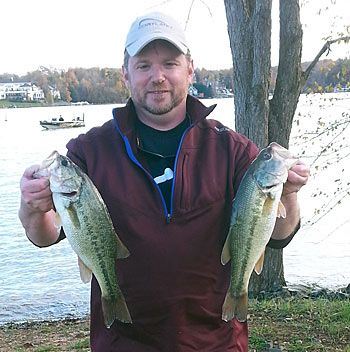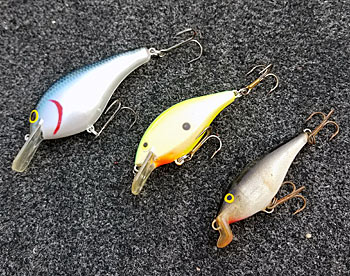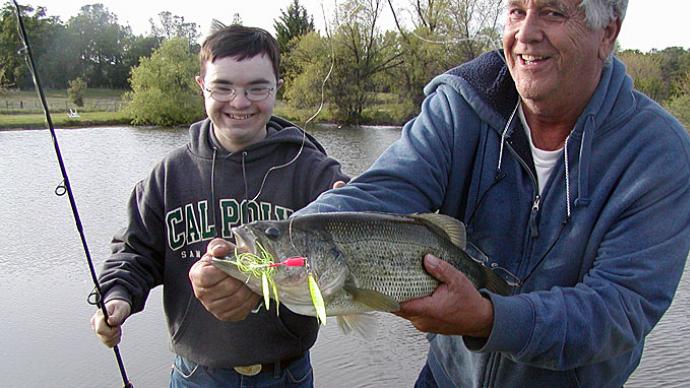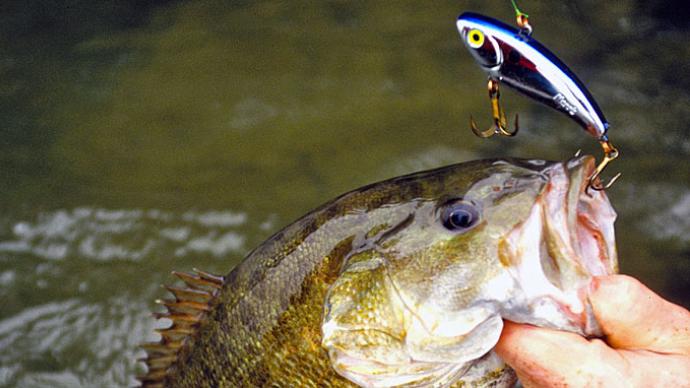
Ray Scott is responsible for much of the bass fishing world. He created the format for modern bass tournaments, including rules, prize structure, championships, and conservation efforts such as catch and release, more than 50 years ago. Without him, the sport would likely be a fraction of the 11 million U.S. anglers it claims.
Scott also is known for his love of constructing fishing ponds. The 200-acre estate he built in Pintala, Ala. — and sold in April 2017 — is home to Legacy Lakes, including a 55-acre impoundment that hosted U.S. presidents, entertainers, and fishing shows. Outdoor Life magazine named it America’s Best Private Lake in 2010. While it’s larger than most ponds built for bass fishing, it provided Scott with exclusive access that many anglers would relish.
While some anglers might have permission to fish in a farmer’s private pond, most fish community ponds are in urban settings. And they aren’t the only ones. Within easy access to large populations, plenty of anglers and other users, such as kayakers, ply their waters. If you’re one of these anglers, don’t settle for whatever you can catch. Here’s how to catch more and bigger bass from pressured public ponds.
Check Your Timing
Ask a bass angler the best time to go fishing; the answer will likely be “anytime.” But bass are rarely on that schedule. Environmental conditions like low light often determine when bass feed most aggressively.
One condition that keeps them from biting is high levels of fishing pressure. Maybe that has kept you from fishing in a public pond near your home. It doesn’t have to be a deterrent. You have to find ways to work around it. And those begin with when you make your first cast.

Every body of water has peak levels of angling activity. If the pond you fish sees the most pressure on sunny afternoons, for example, then schedule your fishing trips in the morning or on rainy days. If local regulations allow it, fishing after dark is a good option, too.
These “off-hour” times won’t be apparent at first. But the more time you spend at the pond, the more they’ll stand out. And that extra time will improve your fishing in other ways.
It’s All About Location.
Shore anglers haven’t been left out of the fishing electronics market. Some companies sell fish finders shaped like bobbers that you cast out. An app picks up its signal for a smartphone or similar device. If you are shorebound, they’re one way to look under a pond’s surface. Other less-expensive options are available if you keep your eyes open.
Scanning the surrounding terrain can tell a lot about a pond’s bottom. Its shallowest water is usually near the feeder stream or creek. Inflowing water carries sediment, which settles onto the bottom as the current slows. Those deposits eventually begin filling in that portion of the pond.
The shallow water is prime real estate when bass are cruising for spawning spots. So concentrate on your fishing here in spring, especially around a full moon. It also can be good in fall, when bass chase shad and other baitfish into shallow water. A little channel will be through the flat carved by the feeder stream. Aim some casts at it. Bass will use it as a highway to travel on and off the flat. Precisely fishing, these subtle changes can significantly affect the size and quantity of bass you catch from pressured water.
You’ll find the deepest water most often near the outflow or dam. The rare exceptions are naturally occurring ponds filled with runoff; their deepest spots are toward the center. Fish here during summer and winter. Fishing deep water from the shore can be challenging. Bottom-bouncing lures like jigs, swimbaits, and Texas-rigged worms are your best bets. Deep diving crankbaits aren’t because their dive trajectory goes opposite to the bottom when cast from shore.
Look for a defined structure, such as long points or steep banks. Those contours don’t stop at the water’s edge. Instead, they continue, creating structure that concentrates bass. Fish them with bottom-bouncing baits, and note any cover, such as rock or brush, that you find with your lure. Those spots on a spot can further concentrate bass.
Even the shoreline’s composition can clue you to spots with better bass-holding potential. Fish stretches of rock, gravel, and sand first. Like contours, these continue underwater. Bass will gravitate to these spots, especially if no aquatic vegetation is in the pond.
Watch Your Approach
Bass are entirely in tune with their environment. They have to be. It’s a matter of survival. They can detect your presence, whether walking along the bank or floating in a boat. The less they sense your presence, the more willing they will be to bite.
Keep track of your shadow if the pond you fish has clear water. Keeping the sun to your front or side ensures you don’t cast a shadow on the water, which could spook a bass.

Bass can see things above water. How else does one hit your lure as soon as it lands? So stay back from the water’s edge. You can always step closer when you need to land a bass. Use camouflage if the bank you’re standing on rises about the water’s edge. It could be as simple as standing in front of a bush or tree to distort your silhouette. It also might mean wearing a light-colored shirt or jacket and dark-colored pants to match the sky and ground.
Your approach is as essential when fishing from a kayak, canoe, or small boat on a pond. Dropping a tackle box or cooler can make enough noise to spook bass, especially considering how sound is amplified underwater.
Adjust Your Tackle
Bass are curious creatures. They readily attack things that don’t closely match anything in their environment, such as spinnerbait. Use that to your advantage on pressured waters.
Stay current on tackle trends. That will help you be one of the first anglers to use the latest lures, which bass have never seen.
Try new actions and colors. If you only use rattling crankbaits, try a silent model. Instead of buying several bags of one color of soft plastics, buy one bag of several different colors. Sometimes, an off-beat color will outproduce standard colors. Now falling by the side, the bright-pink color bubble gum was a hot commodity in the late 1980s and early 1990s. Tubes, worms, and soft jerkbaits in that shade caught plenty of smallmouth, most of them off guard.
Changing the shape of your soft-plastic lure can trigger more strikes. If you’ve been fishing straight-tailed worms, try one with an aggressive swimming tail. Sometimes, bigger lures can be the best choice.
Different presentations are important, too. Crankbaits aggressively bounced across the bottom can draw reaction strikes from bass. They are forced to decide: eat now or miss a meal. And don’t give up after one cast. Sometimes, repeated casts are needed to flip their switch. Other times, they might need to see a lure from a different angle. That can be accomplished by stepping down the bank without changing where your cast lands.
If you can’t make them eat, it’s time to try coaxing them into a meal. Finesse tactics are time-tested ways of dealing with fishing pressure. Smaller and more natural in color than power-fishing lures, they provide an easy, lifelike target for wary bass. They include 4-inch worms, small craws, tubes, and reapers. Fish them in the same spots, but slow your retrieve and rig them in different ways, such as drop shots, split-shot rigs, and Neko rigs, which involve a worm rigged wacky style with a small nail-shaped weight inserted into one end.
You also need to scale down your rod, reel, and line. Light and medium action spinning rods 7 feet or longer will cast finesse lures farther, while slower action protects the light line. Match them with a quality spinning reel outfitted with a smooth front drag. Use a braided line whose diameter is the equivalent of 4- or 6-pound test monofilament. Those typically rate at about 15 pounds. Use a 3- or 4-foot-long fluorocarbon leader if you’re worried about spooking fish.
Many big bass swim in ponds, even ponds that receive a lot of fishing pressure. Don’t worry if you hook one on the lighter spinning gear. With a correctly set drag and consistent pressure on your part, these outfits will handle any size bass, even those that push double-digit weights.




